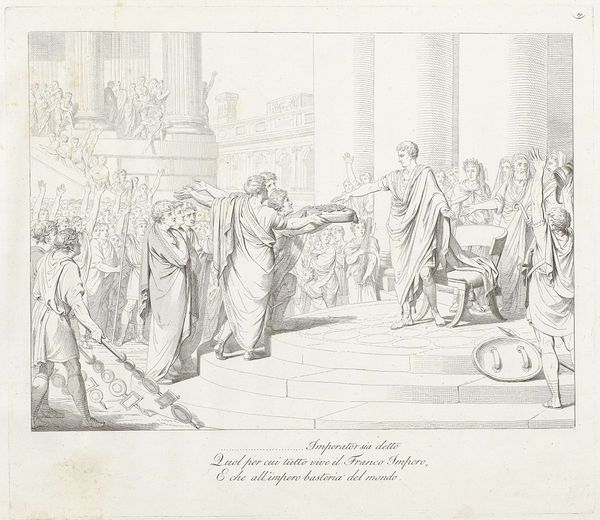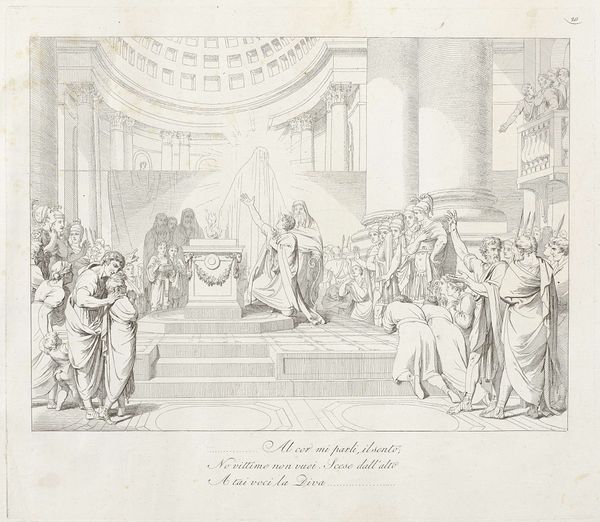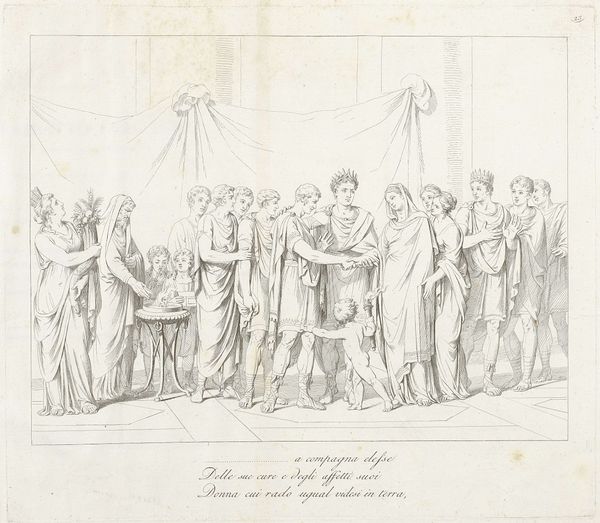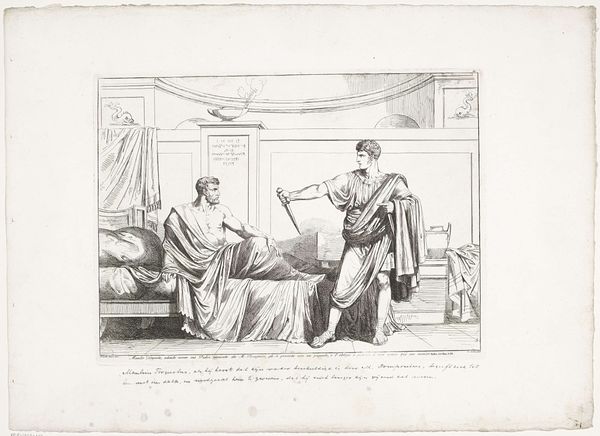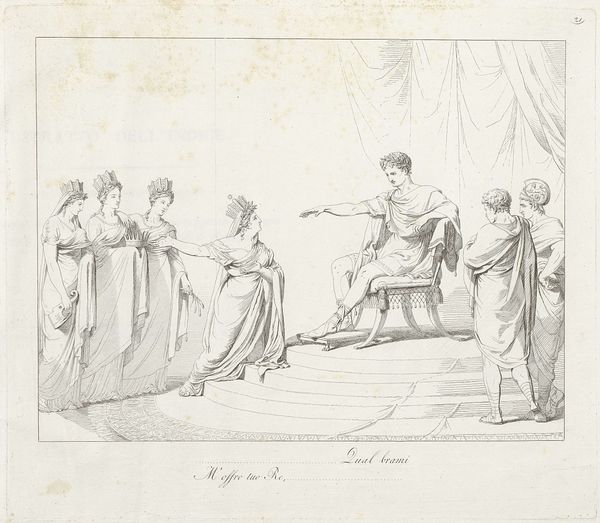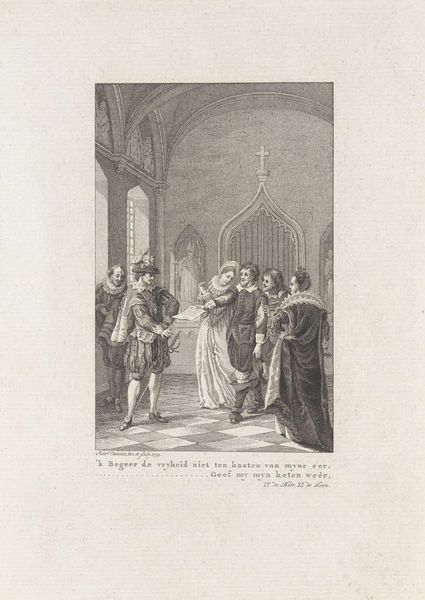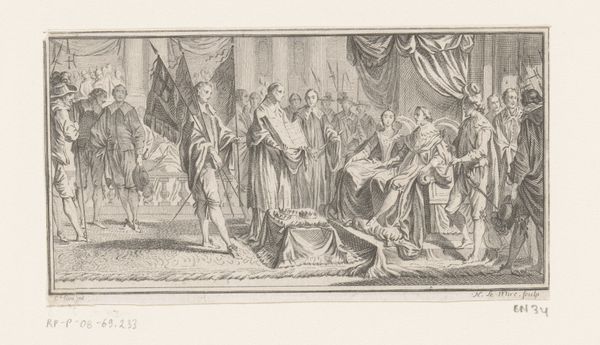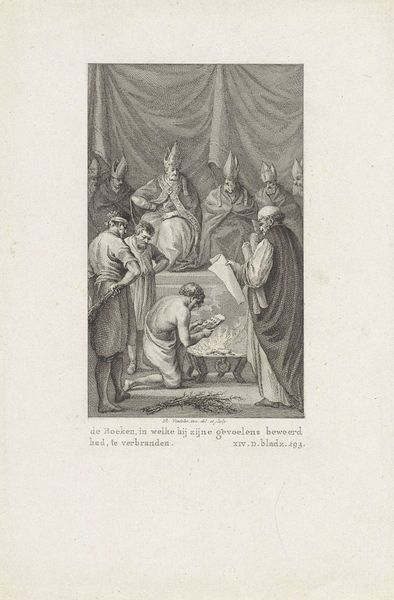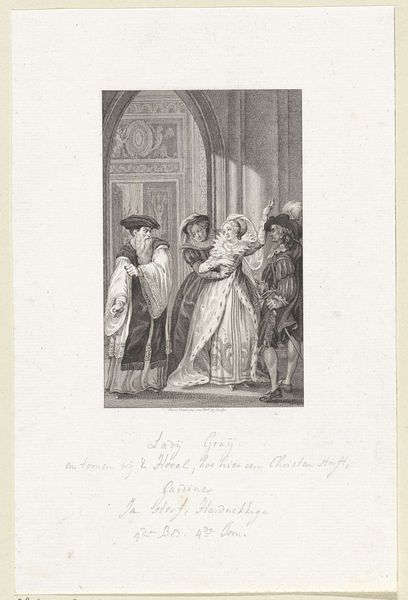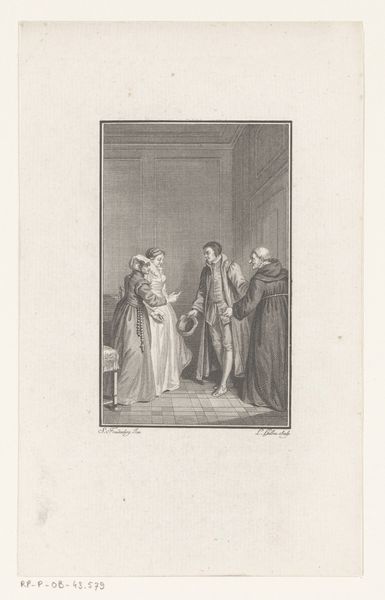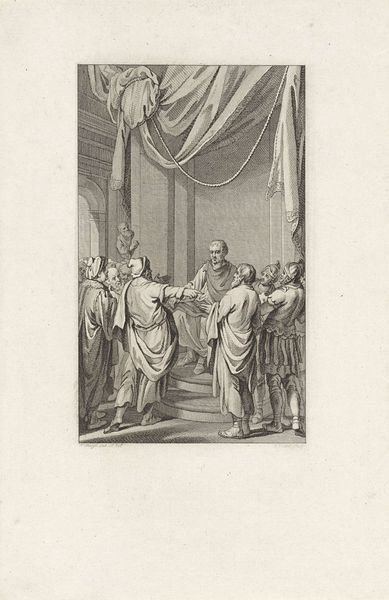
Napoleon staat met zijn arm om een vrouwelijke personificatie en onvangt een rol van een man 1808
0:00
0:00
engraving
#
portrait
#
neoclacissism
#
allegory
#
pencil sketch
#
classical-realism
#
figuration
#
classicism
#
group-portraits
#
line
#
history-painting
#
engraving
Dimensions: height 332 mm, width 382 mm
Copyright: Rijks Museum: Open Domain
Teodoro Matteini created this print depicting Napoleon, a woman, and another man. During the late 18th and early 19th centuries, political prints were a popular medium for shaping public opinion. Here, Matteini uses classical imagery to legitimize Napoleon’s reign. The scene evokes a sense of ceremony, as Napoleon receives a scroll, possibly representing law or decree, while standing with a female figure who could be an allegorical representation of France. The image presents Napoleon as a ruler who receives his power through agreement and law, rather than by force. However, what does it mean to have a male artist represent Napoleon in this way? Consider the power dynamics between the figures. The woman is there as a symbol, while the men exchange power. Matteini’s image speaks to a moment of political transition, but also to enduring questions of power, gender, and representation.
Comments
No comments
Be the first to comment and join the conversation on the ultimate creative platform.
